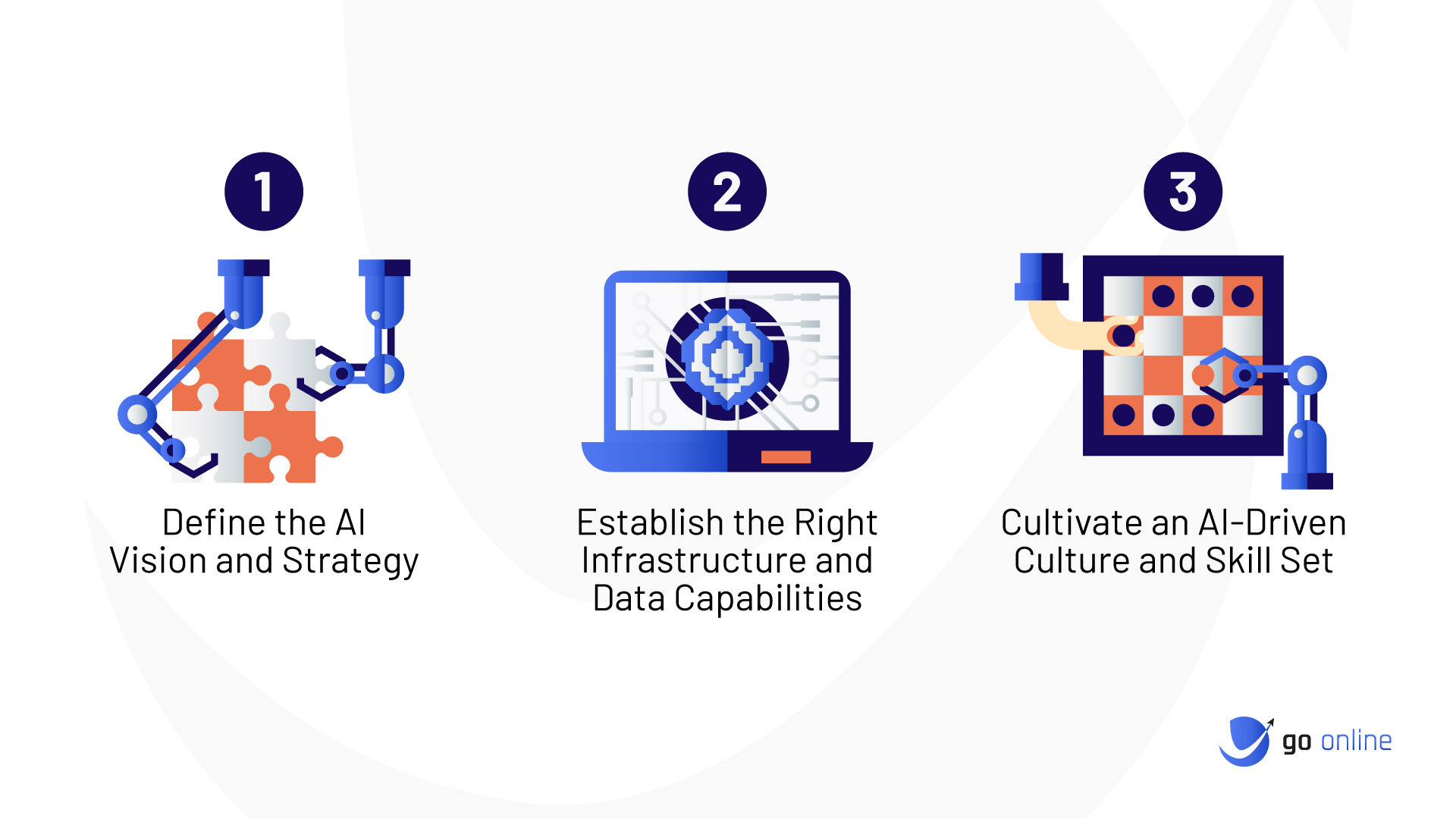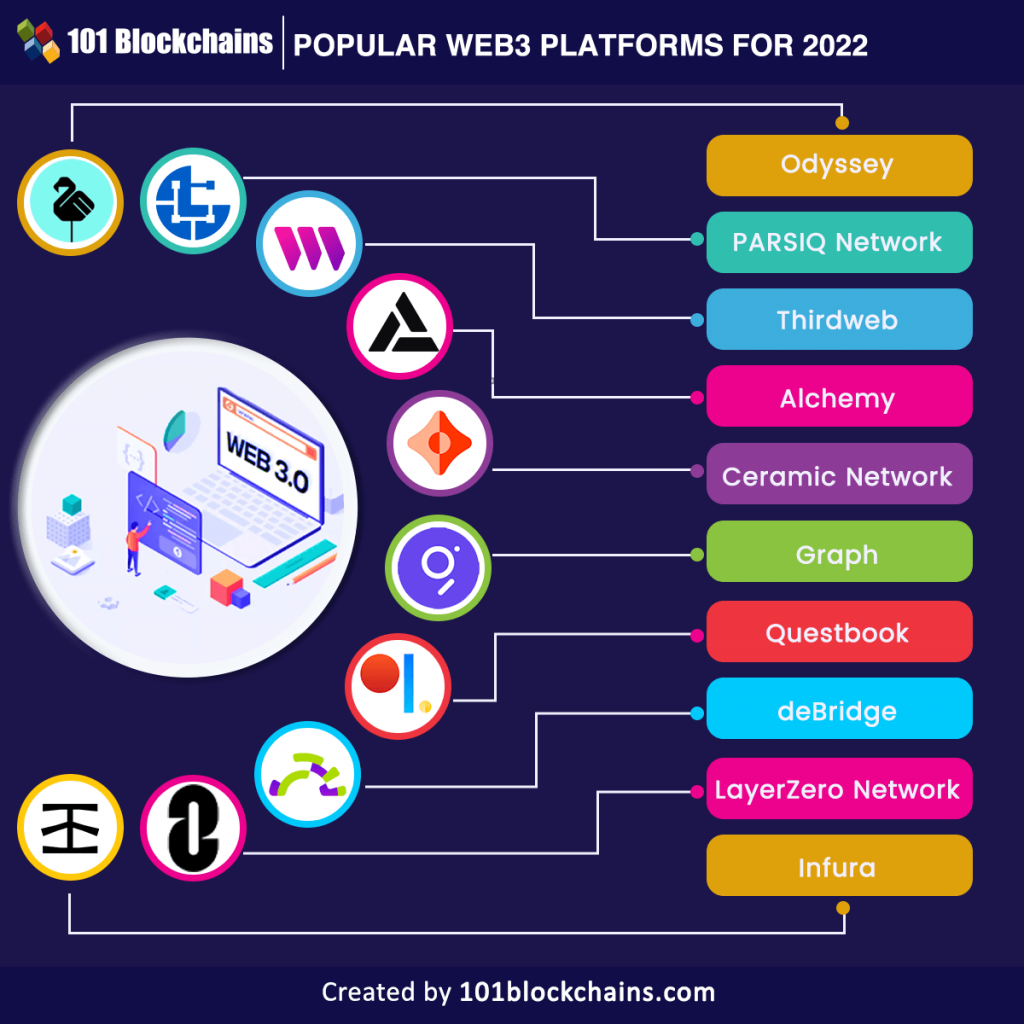
Building an AI-Powered Data Strategy: Your Guide to Smarter Decisions & Future Growth
In today’s hyper-connected world, data is no longer just a byproduct of business operations; it’s the lifeblood of innovation, efficiency, and competitive advantage. But simply having data isn’t enough. As data volumes explode, the real challenge lies in transforming raw information into actionable insights. This is where an AI-powered data strategy comes into play.
For beginners, the idea of AI and data strategy might sound complex and intimidating. Fear not! This comprehensive guide will break down what an AI-powered data strategy is, why it’s crucial for your organization, and how you can start building one, even if you’re just beginning your journey.
What is an AI-Powered Data Strategy?
At its core, an AI-powered data strategy is a comprehensive plan for how an organization collects, stores, processes, analyzes, and leverages its data using Artificial Intelligence (AI) and Machine Learning (ML) technologies to achieve specific business goals.
It’s more than just buying some AI software or collecting a lot of data. It’s about creating a systematic approach where:
- Data is treated as a strategic asset: It’s valuable and managed with care.
- AI and ML are integrated: These technologies are used to automate analysis, predict trends, and optimize processes.
- Decisions are data-driven: Instead of relying on gut feelings, choices are informed by insights generated from data.
- Continuous improvement is built-in: The strategy evolves as data grows and AI capabilities advance.
Think of it like building a smart, self-improving engine for your business, where data is the fuel and AI is the advanced mechanism that turns that fuel into powerful forward motion.
Why an AI-Powered Data Strategy is Essential for Your Business
In an era of rapid digital transformation, standing still is falling behind. Here’s why embracing an AI-powered data strategy isn’t just a good idea, but a necessity:
- 1. Smarter, Faster Decision-Making:
- Problem: Manual data analysis is slow and limited.
- Solution: AI can analyze vast amounts of data in real-time, identifying patterns, correlations, and anomalies that human analysts might miss. This leads to quicker, more informed decisions across all departments.
- 2. Enhanced Operational Efficiency:
- Problem: Repetitive tasks and inefficient workflows.
- Solution: AI and automation can streamline processes, optimize resource allocation, predict maintenance needs for equipment, and improve supply chain management, leading to significant cost savings.
- 3. Superior Customer Experiences:
- Problem: Generic customer interactions.
- Solution: AI can personalize marketing campaigns, recommend products, provide intelligent customer support (chatbots), and predict customer needs, leading to higher satisfaction and loyalty.
- 4. Unlocking New Revenue Streams & Innovation:
- Problem: Missed opportunities.
- Solution: By analyzing market trends and customer behavior, AI can help identify gaps in the market, suggest new product or service ideas, and even create entirely new business models.
- 5. Predictive Power & Risk Mitigation:
- Problem: Reactive responses to problems.
- Solution: AI can predict future trends, potential risks (e.g., customer churn, equipment failure, fraud), allowing your business to proactively mitigate issues before they escalate.
- 6. Competitive Advantage:
- Problem: Falling behind data-savvy competitors.
- Solution: Businesses that effectively leverage AI and data will outmaneuver those that don’t, gaining insights and efficiencies that their rivals lack.
The Core Pillars of an AI-Powered Data Strategy
Building a robust AI-powered data strategy involves several interconnected components. Think of these as the essential building blocks:
1. Data Collection & Ingestion
- What it is: The process of gathering raw data from various sources. This includes internal systems (CRM, ERP, sales, finance), external sources (social media, public datasets), IoT devices, and more.
- Why it’s crucial: AI models are only as good as the data they’re trained on. A wide variety of relevant and diverse data sources is key.
- Beginner Tip: Start by identifying the most critical data sources that directly impact your key business goals. Don’t try to collect everything at once.
2. Data Quality & Governance
- What it is: Ensuring the data is accurate, complete, consistent, timely, and relevant. Data governance establishes policies, procedures, roles, and responsibilities for managing data as a strategic asset.
- Why it’s crucial: "Garbage in, garbage out" – poor quality data will lead to flawed AI insights and bad decisions. Governance ensures compliance and trust.
- Beginner Tip: Focus on core data elements first (e.g., customer names, product IDs) and establish clear rules for their entry and maintenance.
3. Data Storage & Management
- What it is: How and where your data is stored, organized, and made accessible. This often involves:
- Data Warehouses: Structured data, optimized for reporting and analysis.
- Data Lakes: Unstructured and semi-structured data, raw format, suitable for exploration and AI/ML training.
- Cloud Platforms: Scalable and flexible storage solutions (AWS S3, Azure Data Lake Storage, Google Cloud Storage).
- Why it’s crucial: Efficient storage ensures data is readily available for AI processing without performance bottlenecks.
- Beginner Tip: Consider cloud solutions for their scalability and ease of use, even for smaller datasets.
4. Data Processing & Transformation (ETL/ELT)
- What it is: The process of cleaning, transforming, and loading data into a format suitable for analysis and AI model training.
- ETL (Extract, Transform, Load): Data is transformed before loading into a data warehouse.
- ELT (Extract, Load, Transform): Data is loaded raw into a data lake, and then transformed within the lake or during analysis.
- Why it’s crucial: Raw data is rarely ready for AI. This step ensures data is consistent, normalized, and optimized for machine learning algorithms.
- Beginner Tip: Think of this as preparing ingredients for a recipe. You wouldn’t bake with raw, unwashed vegetables!
5. AI/ML Model Development & Deployment
- What it is: The core of the "AI-powered" aspect. This involves:
- Feature Engineering: Selecting and transforming variables from your data to improve AI model performance.
- Model Training: Feeding processed data to AI algorithms to learn patterns and make predictions.
- Model Evaluation: Testing the model’s accuracy and performance.
- Model Deployment: Integrating the trained AI model into business applications or workflows.
- Model Monitoring: Continuously tracking the model’s performance and retraining as needed.
- Why it’s crucial: This is where the magic happens – where data becomes predictive insights and automated actions.
- Beginner Tip: Start with simple, well-defined problems where AI can provide clear value (e.g., predicting customer churn, classifying emails).
6. Data Visualization & Reporting
- What it is: Presenting complex data insights and AI model outputs in an easy-to-understand visual format (dashboards, charts, reports).
- Why it’s crucial: Even the best AI models are useless if their insights aren’t communicated effectively to decision-makers.
- Beginner Tip: Use tools like Tableau, Power BI, or Google Data Studio to create interactive dashboards that tell a story with your data.
7. Security & Compliance
- What it is: Protecting your data from unauthorized access, breaches, and misuse, while adhering to data privacy regulations (like GDPR, CCPA).
- Why it’s crucial: Data breaches can lead to massive financial and reputational damage. Compliance is non-negotiable.
- Beginner Tip: Implement basic security measures (strong passwords, access controls) and understand the privacy regulations relevant to your industry and location.
Building Your AI-Powered Data Strategy: A Step-by-Step Guide for Beginners
Now that you understand the components, let’s look at how to approach building your strategy.
Step 1: Define Your Business Goals (The "Why")
Before you collect a single piece of data or think about AI, ask: What problems are we trying to solve? What opportunities do we want to seize?
- Examples:
- "Reduce customer churn by 15%."
- "Increase marketing campaign ROI by 20%."
- "Optimize supply chain costs by 10%."
- "Automate routine customer support inquiries."
- Beginner Tip: Start with 1-2 clear, measurable goals. Don’t try to solve everything at once.
Step 2: Assess Your Current Data Landscape
Understand what data you currently have, where it lives, its quality, and who owns it.
- Questions to ask:
- What data sources do we currently use (CRM, ERP, website analytics, spreadsheets)?
- Is our data structured or unstructured?
- What is the quality of our data (duplicates, missing values, inconsistencies)?
- Where are our data silos (data trapped in separate systems)?
- What data are we not collecting that we should be?
- Beginner Tip: Create a simple spreadsheet mapping out your key data sources and their current state.
Step 3: Establish Data Governance & Quality Standards
This is the foundation. Without good data, AI is useless.
- Actions:
- Define data ownership and responsibilities.
- Set clear definitions for key data terms (e.g., "customer," "sale").
- Implement data cleansing processes to remove errors and inconsistencies.
- Develop data privacy and security policies.
- Beginner Tip: Start with a few critical data points. Appoint a "data champion" in your team to oversee initial efforts.
Step 4: Choose the Right Technologies & Tools
You don’t need to build everything from scratch. Leverage existing platforms.
- Considerations:
- Cloud vs. On-Premise: Cloud platforms offer scalability, flexibility, and often pre-built AI services.
- Data Storage: Data warehouses (e.g., Snowflake, Google BigQuery) or data lakes (e.g., AWS S3, Azure Data Lake).
- ETL/ELT Tools: Tools like Fivetran, Stitch, or Apache NiFi.
- AI/ML Platforms: Cloud AI services (AWS SageMaker, Azure ML, Google AI Platform) or open-source libraries (TensorFlow, PyTorch).
- Visualization Tools: Tableau, Power BI, Looker.
- Beginner Tip: Many cloud providers offer "free tier" options or trials. Experiment to see what fits your needs and budget. Look for integrated platforms that offer a suite of data and AI services.
Step 5: Build a Data-Savvy Team & Culture
Technology alone isn’t enough. You need people who understand data and AI.
- Roles to consider (don’t need all at once!):
- Data Engineer: Builds and maintains data pipelines.
- Data Analyst: Interprets data and creates reports.
- Data Scientist: Develops and deploys AI/ML models.
- Business Stakeholders: People who understand the business problems and can use the insights.
- Actions:
- Invest in training for existing employees.
- Foster a culture where decisions are questioned and backed by data.
- Encourage cross-functional collaboration.
- Beginner Tip: Start by upskilling existing team members who show an interest. You might be surprised by hidden talent!
Step 6: Start Small, Scale Big (Pilot Projects)
Don’t try to implement a massive AI system overnight.
- Actions:
- Identify a small, high-impact pilot project that aligns with your business goals (from Step 1).
- Execute the project, learn from it, and demonstrate clear value.
- Use the success of the pilot to secure further investment and buy-in.
- Beginner Tip: A pilot project should be manageable (3-6 months), have clear success metrics, and involve a limited scope.
Step 7: Foster a Data-Driven Culture & Continuous Improvement
An AI-powered data strategy is not a one-time project; it’s an ongoing journey.
- Actions:
- Regularly review your data strategy against evolving business needs.
- Promote data literacy across the organization.
- Encourage experimentation and learning from failures.
- Stay updated on new AI technologies and methodologies.
- Beginner Tip: Celebrate data-driven successes and share insights widely to encourage adoption.
Common Challenges and How to Overcome Them
Even with the best plan, you’ll encounter hurdles. Here are some common ones and practical solutions:
- 1. Data Silos:
- Challenge: Data is isolated in different departments or systems, preventing a unified view.
- Solution: Implement data integration strategies (ETL/ELT tools), create a central data platform (data lake/warehouse), and foster cross-departmental data sharing.
- 2. Poor Data Quality:
- Challenge: Inaccurate, incomplete, or inconsistent data leading to unreliable AI insights.
- Solution: Invest in data cleansing tools, establish strict data entry protocols, implement data validation checks, and assign data ownership.
- 3. Lack of Skills & Talent:
- Challenge: Difficulty finding or retaining data scientists, engineers, and analysts.
- Solution: Upskill existing employees, partner with external consultants or agencies, leverage managed AI services from cloud providers, and explore low-code/no-code AI platforms.
- 4. High Costs & ROI Justification:
- Challenge: The initial investment in data infrastructure and AI can be significant.
- Solution: Start with pilot projects to demonstrate clear ROI quickly, leverage cloud services for pay-as-you-go scalability, and focus on projects that deliver measurable business value.
- 5. Ethical Concerns & Data Privacy:
- Challenge: Ensuring AI is used responsibly, fairly, and in compliance with privacy regulations.
- Solution: Establish clear ethical AI guidelines, ensure data anonymization/pseudonymization where appropriate, implement robust security measures, and maintain transparency about data usage.
The Future of Data Strategy: What to Expect
The landscape of data and AI is constantly evolving. As you build your strategy, keep an eye on these emerging trends:
- Real-time AI: The ability to process data and make predictions instantaneously, crucial for dynamic operations.
- Edge AI: Deploying AI models directly on devices (e.g., IoT sensors, cameras) rather than in the cloud, enabling faster processing and reduced latency.
- Explainable AI (XAI): Developing AI models that can explain their decisions and predictions in a way humans can understand, building trust and accountability.
- Data Mesh: A decentralized data architecture approach where data is treated as a product, owned and managed by domain-specific teams.
- AI Governance: Formal frameworks and policies specifically for managing the responsible development and deployment of AI.
Conclusion: Your Journey to a Data-Powered Future
Building an AI-powered data strategy is not a luxury; it’s a fundamental requirement for any organization aiming to thrive in the digital age. It’s a journey that demands commitment, investment, and a willingness to adapt.
By focusing on clear business goals, ensuring high-quality data, leveraging the right technologies, fostering a data-driven culture, and starting with manageable steps, even beginners can embark on this transformative path. Embrace the power of AI to unlock hidden insights, drive efficiency, enhance customer experiences, and ultimately, secure a smarter, more prosperous future for your business.
Ready to start your AI-powered data journey? Begin by defining your most pressing business question that data can help answer.



Post Comment